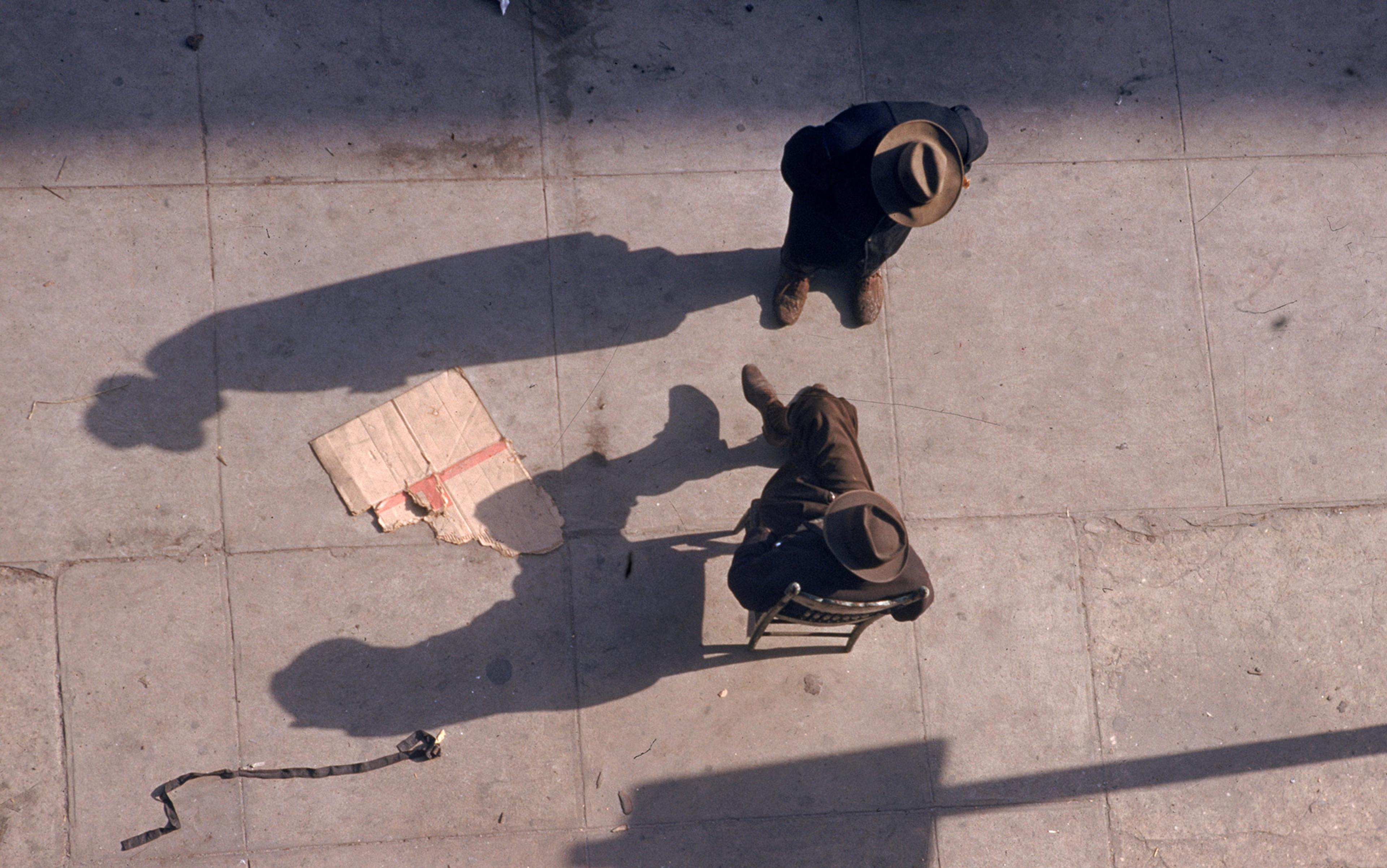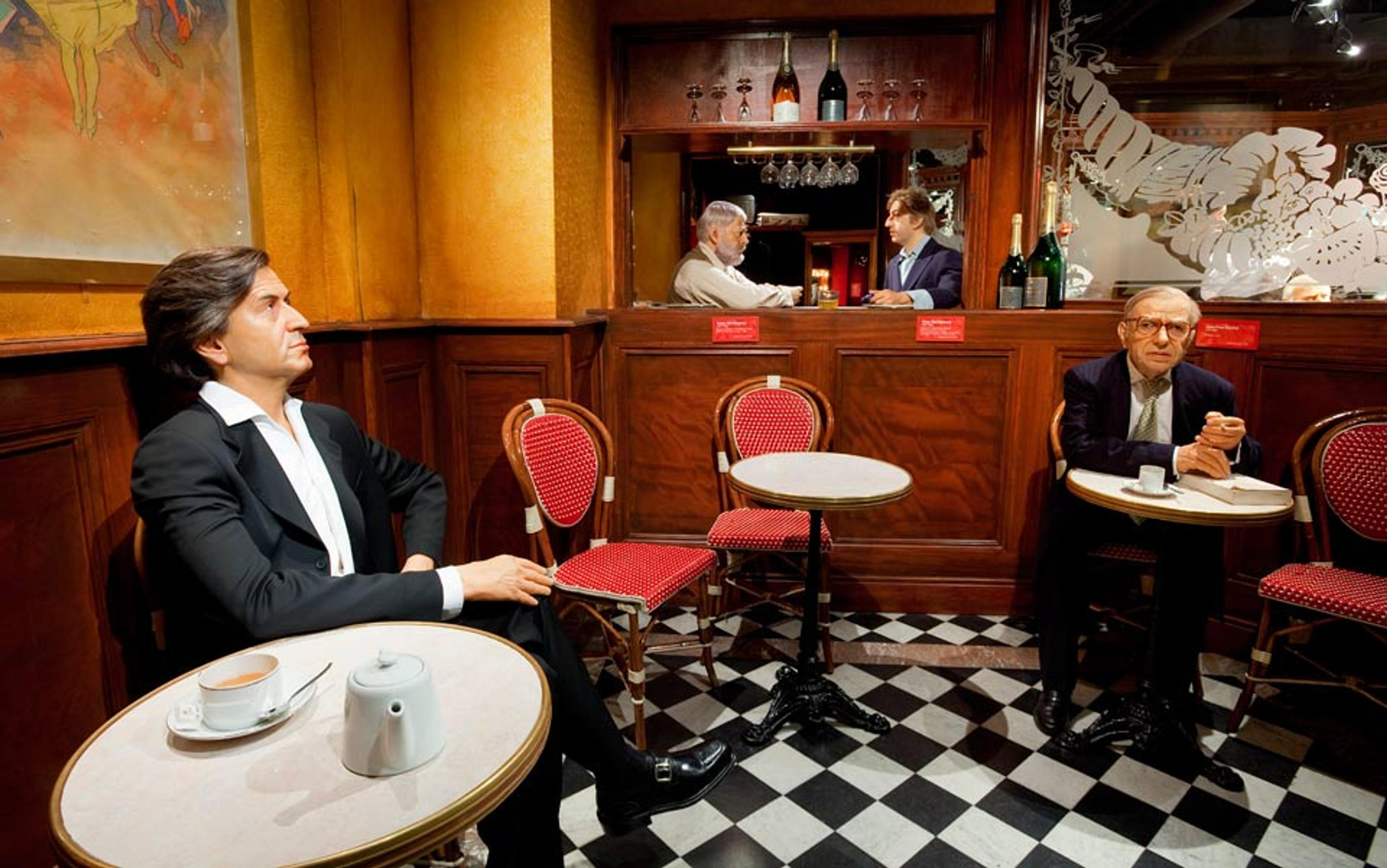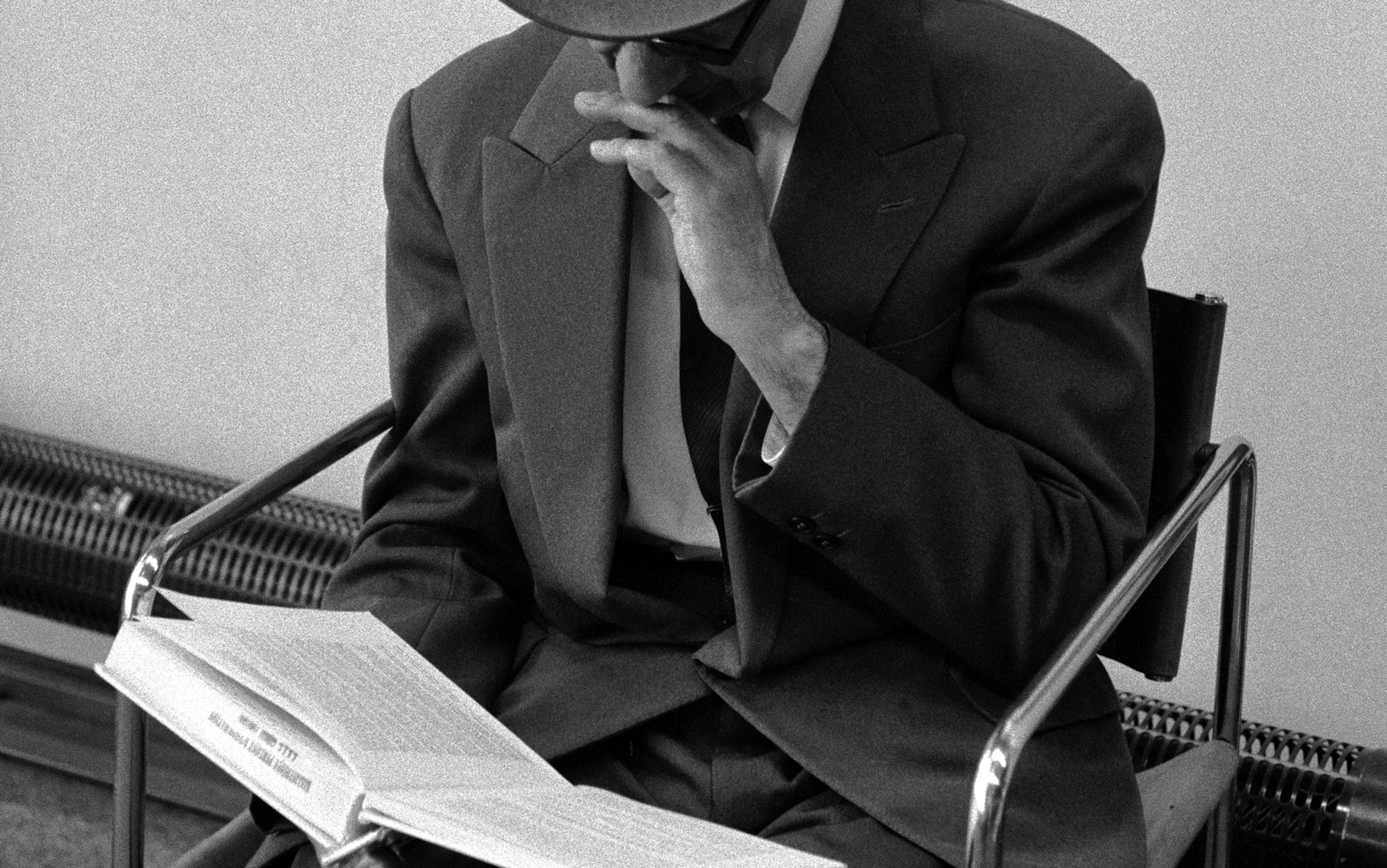In 1986, a McDonald’s restaurant opened at the foot of the Spanish Steps, in the Piazza di Spagna, the most famous square in Rome. The invasion of cheap American fast food into the heart of Rome caused a sensation. One protester was Carlo Petrini, a Leftist Italian journalist, who initiated a movement called Slow Food. Petrini emphasised locally grown produce, biodiversity and, above all, the enjoyment of authentic Italian taste. In the late 1990s, the idea morphed into Cittaslow, or Slow Cities, part of a broader cultural meme called the Slow Movement. The Norwegian philosopher Guttorm Fløistad grasped the beat of the Slow Movement when he wrote:
The only thing for certain is that everything changes. The rate of change increases. If you want to hang on, you better speed up. That is the message of today. It could however be useful to remind everyone that our basic needs never change. The need to be seen and appreciated! It is the need to belong. The need for nearness and care, and for a little love! This is given only through slowness in human relations. In order to master changes, we have to recover slowness, reflection and togetherness. There we will find real renewal.
In championing ‘slowness in human relations’, the Slow Movement appears conservative, while constructively calling for valuing local cultures, whether in food and agriculture, or in preserving slower, more biological rhythms against the ever-faster, digital and mechanically measured pace of the technocratic society that Neil Postman in 1992 called technopoly, where ‘the rate of change increases’ and technology reigns. Yet, it is preservative rather than conservative, acting as a foil against predatory multinationals in the food industry that undermine local artisans of culture, from agriculture to architecture. In its fidelity to our basic needs, above all ‘the need to belong’ locally, the Slow Movement founds a kind of contemporary commune in each locale – a convivium – responding to its time and place, while spreading organically as communities assert their particular needs for belonging and continuity against the onslaught of faceless government bureaucracy and multinational interests.
In the tradition of the Slow Movement, I hereby declare my manifesto for ‘Slow Thought’. This is the first step toward a psychiatry of the event, based on the French philosopher Alain Badiou’s central notion of the event, a new foundation for ontology – how we think of being or existence. An event is an unpredictable break in our everyday worlds that opens new possibilities. The three conditions for an event are: that something happens to us (by pure accident, no destiny, no determinism), that we name what happens, and that we remain faithful to it. In Badiou’s philosophy, we become subjects through the event. By naming it and maintaining fidelity to the event, the subject emerges as a subject to its truth. ‘Being there,’ as traditional phenomenology would have it, is not enough. My proposal for ‘evental psychiatry’ will describe both how we get stuck in our everyday worlds, and what makes change and new things possible for us.
After working methodically through the meaning of the event, I want to elucidate and illuminate Slow Thought through seven proclamations:
1. Slow Thought is marked by peripatetic Socratic walks, the face-to-face encounter of Levinas, and Bakhtin’s dialogic conversations
These three philosophers share a methodical, deliberate, indeed almost plodding approach to working on philosophical puzzles. Socrates spent his time walking around the public squares of ancient Athens, engaging people in impromptu conversations with disarmingly simple questions. Closer to our times, Emmanuel Levinas, a Lithuanian Jew who survived the Holocaust in France, insisted that being human is a face-to-face encounter, where the ethics of how we treat each other comes first and trumps everything else. The Russian thinker Mikhail Bakhtin analysed literature as dialogic or relational encounters, even in soliloquies or internal monologues where there is always an implicit other who listens and poses questions. All three philosophers share thinking as a relational activity – slowed down by walking around the public square and in a face-to-face dialogue.
2. Slow Thought creates its own time and place
Slow Thought exists beyond geopolitical boundaries (‘thinking without borders’ to paraphrase another movement) and resists the timely – defined as ‘contemporary’ or ‘modern’. Refusing the time constraints of 30-second media soundbites and the 24-hour news cycle, Slow Thought is asynchronic. This means that it is not sequential in time, but structured by the slow logic of thought. In Jewish talmudic exegesis or interpretation of sacred texts, pilpul describes a question-and-answer method of dialogue in which an answer might appear in ancient Babylonia to an ethical question formulated later and elsewhere in the Spain of the Moors and the Sephardic Jews. Pilpul is dialogically structured by the canons of philosophical debate rather than by historical chronology or the passing movements of the vulgar and the vernacular.
This idea is borne out in a story I told in Letters to a Young Therapist (2011) about my mentor in medical school, Joel Elkes, who met up with his philosophy mentor from Lithuania some 40 years later in Jerusalem. Looking up momentarily from his reading, the scholar greeted his erstwhile pupil after the Holocaust, the founding of Israel and many wars: ‘Oh, Joel, I am reading Plato, would you like to join me?’ Like pilpul and the relational dialogue, Slow Thought has a life of its own.
We must imagine the course of life differently than through speed or milestones
3. Slow Thought has no other object than itself
Slow Thought imitates a view of life that we risk losing in the headlong rush to an evanescent future from an unsecured, impracticable present whose main characteristic is speed. Thinking, like life, is never complete, it is a possibility that never exhausts itself, as Giorgio Agamben wrote in 1996 in an essay on the philosophy of childhood:
The Latins had a singular expression, vivere vitam, which was passed on to modern romance languages as vivre sa vie, vivere la propria vita [live one’s own life]. The full transitive force of the verb ‘vivere’ has to be restored here; a force, however that does not take on an object (this is the paradox!), but, so to speak, has no object other than life itself. Life here is a possibility, a potentiality that never exhausts itself in biographical facts and events, since it has no object other than itself. It is an absolute immanence that nevertheless moves and lives.
It is not incidental that Agamben elaborated the notion of living one’s life in an essay on childhood, as this is critical in our view of children, and challenges what I call developmental thinking. We must challenge the notion of development at all stages of life, and imagine the course of life differently than through speed or milestones.
As a reader of Michel Foucault, Agamben offers us the reflective life as care of the self, a theme that ironically haunts the later writings of Foucault as he faced his own death due to AIDS. Vivere vitam, living one’s own life, resonates deeply with Gabriel García Márquez’s autobiography Vivir para contarla (2002), translated by Edith Grossman as Living to Tell the Tale (2003). García Márquez also wrote while living with a potentially fatal disease. True, in his title, living has a transitive force embodied in the goal of writing, but writing is García Márquez’s way of living a life, his focal practice, which we may say is his way of thinking. In 2009, in response to claims that he had stopped writing, he countered: ‘Not only is it not true, but the only thing I do is write.’ Slow Thought, like the Latin vivere vitam, has no object but, like life itself, is embodied in focal practices that allow us to live more fully in an atemporal present, freed from the burden of an imperfect past or the futile promise of a redemptive future.
4. Slow Thought is porous
In his memorable essay on Naples, co-written in 1925 with Asja Lacis, Walter Benjamin described the city as porous:
The stamp of the definitive is avoided. No situation appears intended forever, no figure asserts its ‘thus and not otherwise’. […] one can scarcely discern where building is still in progress and where dilapidation has already set in. For nothing is concluded. Porosity results […] from the passion for improvisation, which demands that space and opportunity be at any price preserved.
If we imagine the culture of Naples as an apparatus (in Foucault’s sense of a tool for structuring society), Benjamin’s ‘porosity’ is his name for that apparatus, for the way that he observes it, and for the organising principle that binds his observations to a communicative act (the essay on Naples/porosity):
Porosity is the inexhaustible law of the life of this city, reappearing everywhere. A grain of Sunday is hidden in each weekday, and how much weekday in this Sunday!
Slow Thought is a porous way of thinking that is non-categorical, open to contingency, allowing people to adapt spontaneously to the exigencies and vicissitudes of life. Italians have a name for this: arrangiarsi – more than ‘making do’ or ‘getting by’, it is the art of improvisation, a way of using the resources at hand to forge solutions. The porosity of Slow Thought opens the way for potential responses to human predicaments.
5. Slow Thought is playful
This means, above all, that rules can be broken in serious thought. Slow Thought throws out the rulebook, as Erasmus, cited by Johan Huizinga in his masterful study Homo Ludens (1955), said:
In my opinion, it is quite unnecessary to act in the Schools as you act when playing cards or dice, where any infringement of the rules spoils the game. In a learned discussion, however, there should be nothing outrageous or risky in putting forward a novel idea.
This neatly echoes Badiou’s philosophy of the event that accounts for novation – the entry of new things into the world. In his Second Manifesto for Philosophy (2011), Badiou asserts flatly that: ‘Philosophy is nothing if not reckless.’ In its playful recklessness, Slow Thought is not bound. Neither time nor tradition can corral it. The ‘play’ or tolerance of Slow Thought means not only that rules will be broken but that a rupture in thought is possible. This rupture is a refusal to accept what Milan Kundera in his essay ‘Sixty-Three Words’ (1988) calls ‘the nonthought of received ideas’.
Huizinga calls play ‘an intermezzo, an interlude in our daily lives’ in a lovely play of words, seeing play as the activity between acts of a play or an opera, ‘distinct from “ordinary life”’, ‘stepping out of common reality into a higher order’. Play creates discontinuity in our lives. By being playful, Slow Thought is not opposed to seriousness but creates its own sense. Like children’s play, Slow Thought is voluntary, has no task, and can be deferred or suspended at any time. Play creates its own time, rules and sense of order, serving as a model for Slow Thought. And like play, Slow Thought is connected with folly, but is not foolish. Play, in Huizinga’s study, has no biological or moral function – it is neither a physical necessity nor a moral duty. No material interest accrues from play and ‘no profit can be gained by it’.
Slow Thought appeals to reflection before conviction, clarity before a call to action
Just as play helps a child to construct a sense of self, play creates its own community, apart from the common world, by disguise or other means, according to Huizinga. There is something masked, disguised and neither evident nor obvious about play. Yet, once again, while not serious or logical, play creates its own rules, order and logic. Slow Thought aims to grasp, to unmask and to decode the rules, order and logic of play.
There is a family resemblance of Slow Thought to other gestures in the history of thought. Laurence Sterne’s Tristram Shandy (1759-67) tells its tale with many deliberate digressions and diversions, always with a satiric purpose. In a celebrated sonnet, the 17th-century poet John Milton affirmed: ‘They also serve who only stand and wait.’ In 1913, Edmund Husserl construed the phenomenal epoché – a bracketing of experience, a suspension of judgment. Levinas refers to lassitude and fatigue as resistance to existence, and dilatoriness as ‘an impossibility of beginning or … the accomplishment of beginning’. Agamben, the philosopher of indistinction and indifference, is fond of Bartleby’s laconic: ‘I would prefer not to.’ Jacques Lacan speaks of la lettre en souffrance, ‘the letter in waiting’, in his seminar on Edgar Allan Poe’s ‘The Purloined Letter’ (1844) – a letter that (eventually/eventfully/eventally) arrives at its destination, despite its displacement. Jacques Derrida deconstructs deferral and delay – to the point that far from arriving at his destination, he never quite manages to embark on the journey as there are so many starting points. Slow Thought invokes the word resistance, not as a psychoanalytic defence, but as abeyance and deferral.
From digression and indifference, through bracketing and suspension, deferral and delay, hesitation and weariness, to displacement and abeyance, Slow Thought has seen many iterations of its defining jest. What they have in common is lingering, tarrying, waiting, and an appeal to reflection before conviction, clarity before a call to action.
6. Slow Thought is a counter-method, rather than a method, for thinking as it relaxes, releases and liberates thought from its constraints and the trauma of tradition
An editorial in The Irish Times in 2014 exhorting Ireland to introduce philosophy to secondary schools argues against ‘attempts to remove time for reflection’, perfectly summed up by ‘the slogans of our techno-consumerist age’ – Just do it, Move fast and break things, YOLO (You only live once) – which encourage us to ‘act now, think later’. Against a ‘consumer society [that] constantly attempts to remove time for reflection’, philosophy is recommended as ‘a counterbalance to this culture of fast action’.
The problem with ‘fast action’ is that it presumes a sure way of doing things and a uniformity that, in a pinch, we can accelerate. Just as fast food works for some meals and not for others, we must remain open to things that take time, both for preserving what is of value from the past and taking the time to forge new approaches in the present. The key here is multiplicity, plurality and diversity, which take time.
According to Ludwig Wittgenstein: ‘There is not a philosophical method, though there are indeed methods, like different therapies.’ The most famous and radical philosopher of the 20th century did not establish a philosophical system because he wished to cure himself – and us – of philosophy. The reference to therapy is important as Wittgenstein compared the work of philosophy to that of medicine or psychology: ‘The philosopher’s treatment of a question is like the treatment of an illness.’
When I say that Slow Thought is a counter-method, I align it with Wittgenstein’s thought, published posthumously in Remarks on the Philosophy of Psychology (1980), where he concludes:
What we find out in philosophy is trivial; it does not teach us new facts, only science does that. But the proper synopsis of these trivialities is enormously difficult, and has immense importance. Philosophy is in fact the synopsis of trivialities.
Let us put this into a greater philosophical perspective. In the work of Badiou and Richard Rorty, we can distinguish two kinds of philosophers. Rorty calls them systematic and edifying philosophers, while Badiou calls them philosophers and anti-philosophers.
True philosophers open possibilities of thought and life. Anti-philosophers close possibilities
Systematic philosophers (according to Rorty) and true philosophers (according to Badiou) build systems of thought, often constructing their own materials (methods) for the philosophical edifice. Thinkers such as Plato and Aristotle, Augustine and Aquinas, Giambattista Vico and Giordano Bruno, Thomas Hobbes and John Locke, René Descartes and Baruch Spinoza, Immanuel Kant and Husserl – they are all systematic philosophers. Others address edifying questions (Rorty) or work to undermine established systems of thought (Badiou’s anti-philosophers). Rorty refers to these thinkers as ‘therapeutic rather than constructive’. Badiou’s anti-philosophers include Paul of Tarsus, Friedrich Nietzsche, Sigmund Freud and his follower Lacan, and Wittgenstein.
Following my philosophical investigations into trauma and event, I discern systematic, true philosophers as philosophers of the event, opening possibilities – of thought and of life. Anti-philosophers are the philosophers of trauma and the abyss, closing possibilities. What they have in common is rupture understood as caesura, discontinuity or hiatus. When rupture becomes trauma/abyss, it is not necessarily clinical trauma as it is conceived in psychiatry and psychoanalysis but the trauma of cultural studies which, true to the way it is understood in the anti-philosophy tradition, is neither systematic nor constructive but deconstructive and, unlike clinical trauma, does not require intervention of any kind.
There is another group of thinkers whom I call methodologists. These are thinkers who offer us new tools of thought. They do not fit easily into the dichotomous categories of philosophy/anti-philosophy or systematic/edifying philosophers. I think of aspects of Nietzsche, such as his genealogy, as a methodology. While Badiou sees Wittgenstein as an anti-philosopher, it is clear that Wittgenstein saw himself as the great methodologist who eschewed a philosophical system and, by clarifying language games, cleaned up certain philosophical pseudo-problems. From this perspective, Derrida is also best viewed as a methodologist who offers a series of extraordinary insights into language, culture and thought with such notions as the pharmakon, dissemination and iteration. Foucault and his greatest reader, Agamben, are methodologists. Foucault offers a series of methodologies – genealogy, archaeology and problematicisation. Agamben has honed Foucault’s archaeology whose genealogy he traces back to Nietzsche and Freud into a refined methodology that he calls philosophical archaeology. Foucault furthermore offers his notions of the dispositif or apparatus, as well as his notion of the ‘care of the self’ as methodologies for investigation, thinking and practice.
Slow Thought is a counter-method as an analogue to anti-philosophy. Just as there are philosophers and anti-philosophers, there are methods and counter-methods. In this sense, we can group Slow Thought as an edifying philosophy and as an anti-philosophy, the way that Nietzsche, Wittgenstein and Derrida examine the tools and methods of thought to clarify genealogies (Nietzsche), to rid us of pseudo-problems (Wittgenstein), and to reveal latent, unknown and disavowed roots, meanings and traces of words (Derrida).
7. Slow Thought is deliberate
In a wonderful philosophical lesson that is structured like a joke, Wittgenstein admonished philosophers about rushing their thinking:
Question: ‘How does one philosopher address another?’
Answer: ‘Take your time.’
This was also Socrates’ fundamental gripe against the silver-tongued Sophists. While the Sophists trained Athenians in rhetoric to defend themselves effectively, Socrates spoke slowly and deliberately, even hesitantly, and was unable to defend himself – in the short run – against the charges of corrupting the youth of Athens. History has given its own judgment on those charges.






